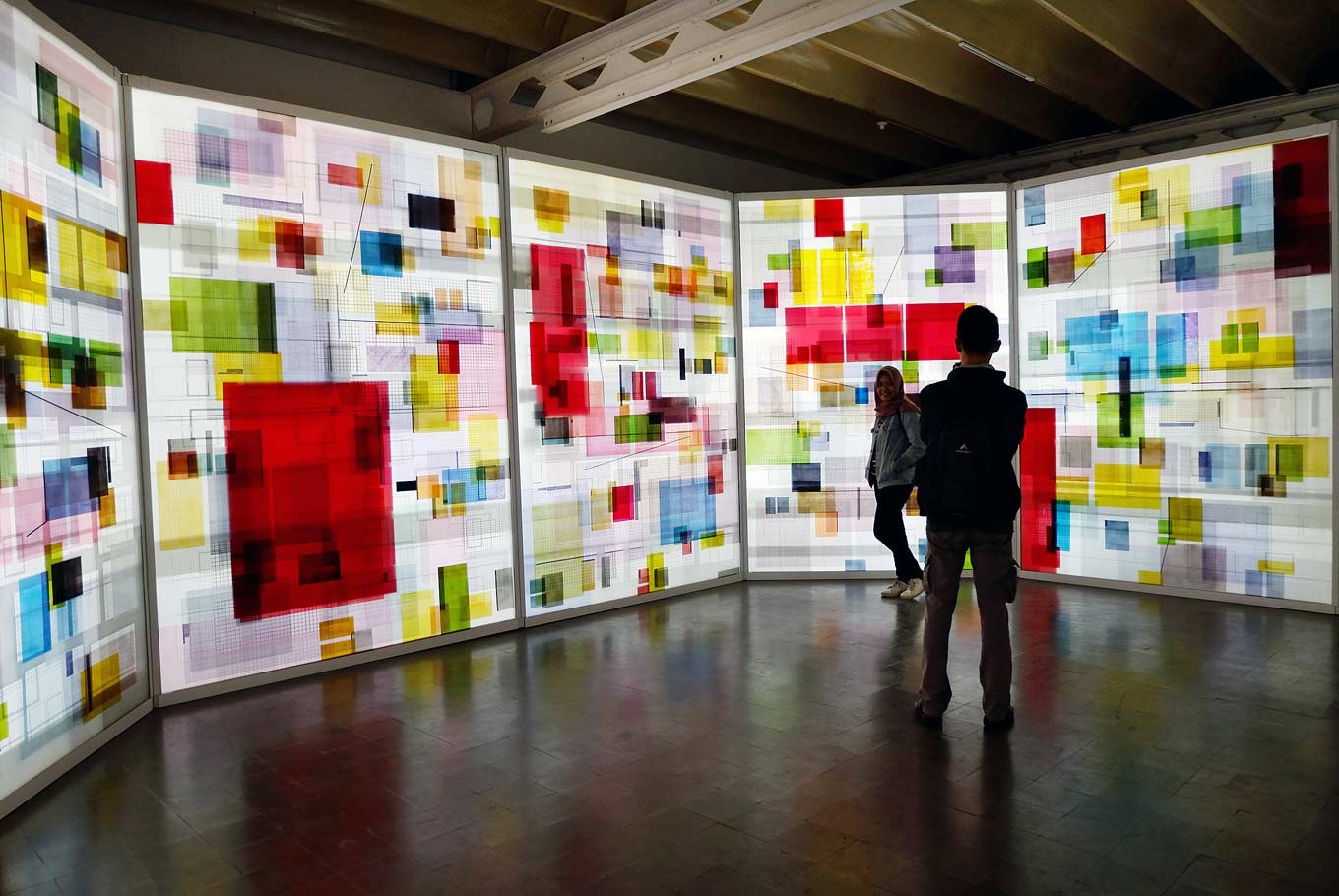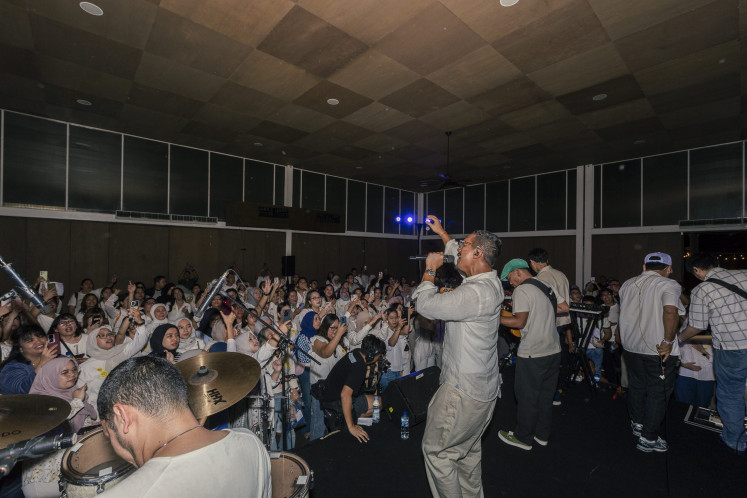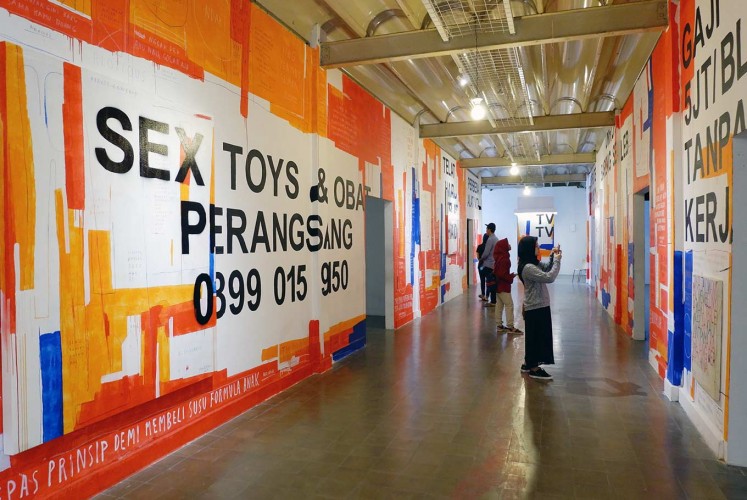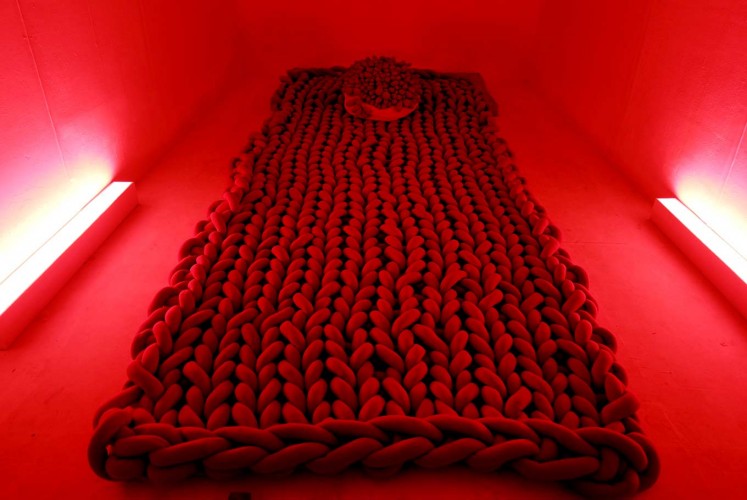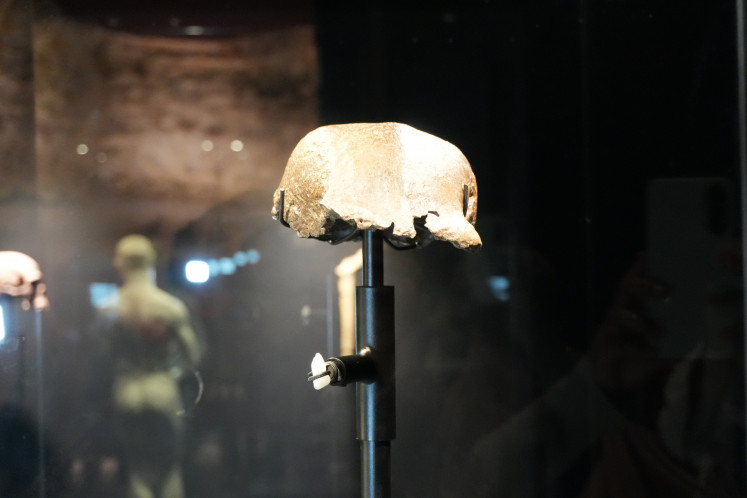Popular Reads
Top Results
Can't find what you're looking for?
View all search resultsPopular Reads
Top Results
Can't find what you're looking for?
View all search resultsBiennale Jogja XIV: Searching for light in the darkness
Thirty-nine artists unite in Yogyakarta to look for hope amid hopelessness in the country.
Change text size
Gift Premium Articles
to Anyone
I
f you google former Jakarta governor Basuki “Ahok” Tjahaja Purnama, you will immediately get news reports about his blasphemy case and his new life in prison. The court declared the ethnic Chinese and Christian politician guilty of insulting Islam and sentenced him to two years’ imprisonment.
While the legal case is over, people still search for updated information about his life. Having observed this phenomenon, artist Aditya Novali has created an installation titled “When I Google Ahok.”
His work is currently on display at the Jogja National Museum in Yogyakarta at Biennale Jogja XIV: Equator #4, which runs from Nov. 2 to Dec. 10. Themed “Stage of Hopelessness”, which can also be twisted to read “Age of Hope,” the event exhibits works from 39 artists, —27 Indonesians and 12 Brazilians.
“This is about how we look for hope when having traumatic experiences,” said the event’s curator, Pius Sigit Kuncoro.
He defines a traumatic experience as a surprising phenomenon that is hard to understand. Aditya’s work, however, is unlike what you see on Google, because there are no photos of Ahok, nor news reports about him. It is a TV pixel-like colorful installation that has attracted many visitors to come closer and take photos.
The installation is not about Aditya’s stand on Ahok’s case. It is about his anxiety over the fact that people may end up confused when they google information about the former governor, since they will be flooded with information that may contain hoaxes. False or misleading information has the potential to lead people into conflicts and widen the social gap.
In the wider context, Aditya wants to talk about people’s growing dependency on the internet, as they tend to resort to search engines when they have questions.
“When I Google Ahok” is an eye-catching work, but it is not the only one.
Words matter: Art featuring writing in large font from Farid Stevy welcomes visitors at Biennale Jogja XIV at the Jogja National Museum, Yogyakarta. (JP/A. Kurniawan Ulung)When entering the museum, you will see Farid Stevy’s writings, which are funny, taboo, impolite or sarcastic, in large fonts on the walls.
For example, “Sex Toys dan Obat Perangsang: 08990159150” (Sex Toys and Sexual Stimulant Supplements), “Umroh bareng Seleb” (Minor Haj with Celebrities) and “Fotonya cantik ka, tapi lebih cantik pakai hijab” (Your photo is pretty, sis, but prettier if you wear a hijab).
Other attractive installations that entice people to a closer look are “Interference” by Arin Dwihartanto Sunaryo, “Show Must Go On” by Sangkakala, “The Death of A Tiger” by Timoteus Anggawan Kusno, “You’re Loser if You Can’t Sleep” by Mulyana Mogus and “Doa Ibu Sepanjang Zaman” (Mother’s Eternal Prayer) by Zico Albaiquni.
Like Aditya, Zico also speaks up about political and social issues. He displays his big painting of Nyai Roro Kidul, the mythical queen of the southern seas, in Yogyakarta. Zico said he is worried about development projects in the province, which is rich in sacred areas. He is afraid that Yogyakarta’s sacred places will lose their charm once they become tourist sites.
Zico participated in a series of long rites, for which he traveled and met people in sacred places. One day, he was inspired to paint Nyai Roro Kidul, a work he completed in nine days.
He then displayed the painting at seven sacred sites, including the Yogyakarta Royal Palace and Mt. Merapi, at dawn to see how wanderers respond and to learn about how they feel about the government’s development projects.
That painting is now exhibited at Biennale Jogja.
Unlike Zico, Mulyana, who displays “You’re Loser if You Can’t Sleep”, takes notice of people who cannot sleep, because there is anger in their hearts.
Overthinking: A bed is the centerpiece in art installation 'You're a Loser if You Can't Sleep' by Mulyana Mogus. (JP/A. Kurniawan Ulung)His installation comprises three things — a punching bag in a room, a large bed in another room and a train on a rail track that connects the two rooms. They all are uniquely designed and colored the same color: pink. Visitors must wear something pink if they want to ride the train.
The punching bag represents the anger, while the bed represents sincerity. When the train runs from one room to the other, it represents the transition from anxiety to the dream world.
Next to Mulyana’s work is the installation “Tersandung Masa Puber” (Stumbled During Puberty) by the Tattoo Merdeka community. The installation comprises a clay-made green statue in a sleeping position on a ship, with pillows hanging above the statue, a bell and running water that rings the bell. The room is dark. If you turn on the flashlight, you can see murals of children’s faces on the walls.
The artwork tries to replicate the atmosphere of a juvenile penitentiary in Kutoarjo in Purworejo, Central Java. Tattoo met the children and found that during their adolescence, they had lived in fear, with bullying being one of the causes.
“They find their freedom when sleeping. The bell is something that they are always afraid of, because it wakes them up,” Pius said, adding that they were also worried about a society that might reject them after they walk free from the penitentiary.
Pius hopes that the artworks displayed by the 39 artists can touch the conscience of visitors. He admitted that political and social messages contained in the artworks were strong, although they were not always clearly visible. “We want people to feel free to interpret them.”

